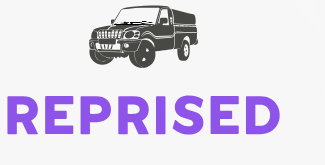Choosing the right interest rate for your loan can impact your financial future. You will typically choose between fixed and variable interest rates. Each option has its own benefits and drawbacks. Understanding these can help you make an informed decision. In this article, we’ll explore the pros and cons of fixed and variable interest rates on loans.
What is a Fixed Interest Rate?
A fixed interest rate stays the same throughout the entire loan term. You pay a consistent amount each month, which makes budgeting easier. Fixed rates offer stability, as your payments do not change even if market rates rise.
Pros of Fixed Interest Rates:
- Predictability: Fixed rates provide stability. Your monthly payments remain constant, so you can plan your budget more effectively.
- Protection from Rate Increases: A fixed rate shields you from market rate hikes. This can save you money if interest rates rise in the future.
- Easy to Understand: Fixed rates offer simplicity. You know exactly how much you’ll pay each month.
Cons of Fixed Interest Rates:
- Higher Initial Rates: Fixed rates often start higher than variable rates. This means you might pay more in the early stages of the loan.
- No Benefit from Rate Drops: If market rates fall, your fixed rate stays the same. You miss the chance to lower your payments.
- Less Flexibility: Fixed rates can lack the flexibility of variable options. You can’t take advantage of lower rates without refinancing.
What is a Variable Interest Rate?
A variable interest rate can change over time, usually in line with market rates. Your payments may go up or down depending on the market. This type of rate often starts lower than fixed rates but can fluctuate.
Pros of Variable Interest Rates:
- Lower Initial Rates: Variable rates often start lower than fixed rates. This can mean lower initial payments, making the loan more affordable.
- Benefit from Rate Drops: If interest rates decrease, your payments may also go down. This can save you money over time.
- Potential for Savings: Over the loan term, you might pay less with a variable rate, especially if rates remain low.

Cons of Variable Interest Rates:
- Unpredictability: Variable rates can make budgeting harder. Your payments can rise without warning, straining your finances.
- Risk of Higher Costs: If interest rates rise, your payments will increase. This could lead to higher overall costs.
- Complexity: Variable rates can be more complex to understand. Changes in payments can catch borrowers off guard.
Which Option Should You Choose?
Your choice between fixed and variable interest rates depends on your financial situation and risk tolerance.
- Choose Fixed Rates If: You prefer stability and predictability. Fixed rates work well if you have a tight budget or want to avoid surprises. They also suit those who believe interest rates will rise in the future.
- Choose Variable Rates If: You can handle fluctuations in your payments. Variable rates may be a good fit if you’re comfortable with some risk. They are also suitable if you expect rates to stay low or decrease.
Final Thoughts
Deciding between fixed and variable interest rates involves weighing the pros and cons of each. Fixed rates offer stability and predictability, making them ideal for those who prefer certainty. On the other hand, variable rates provide an opportunity to save when market rates fall, but they come with the risk of rising costs.
Consider your financial goals, risk tolerance, and market outlook before making a choice. Whether you choose fixed or variable, understanding your loan’s interest rate can help you manage your finances more effectively. Always consult with a financial advisor to ensure the best decision for your specific needs.

